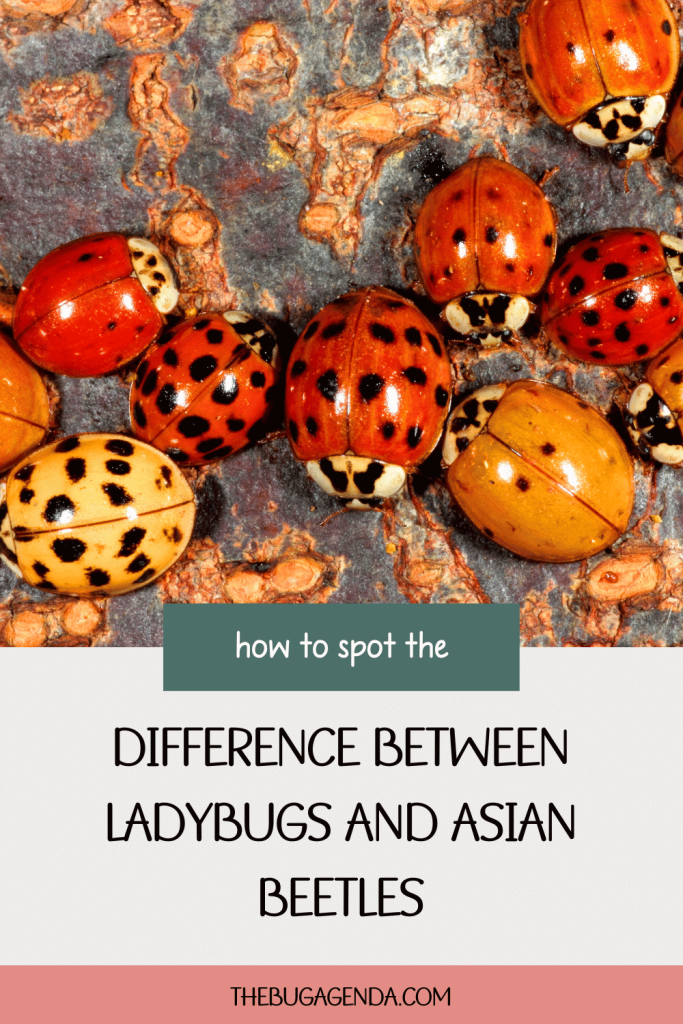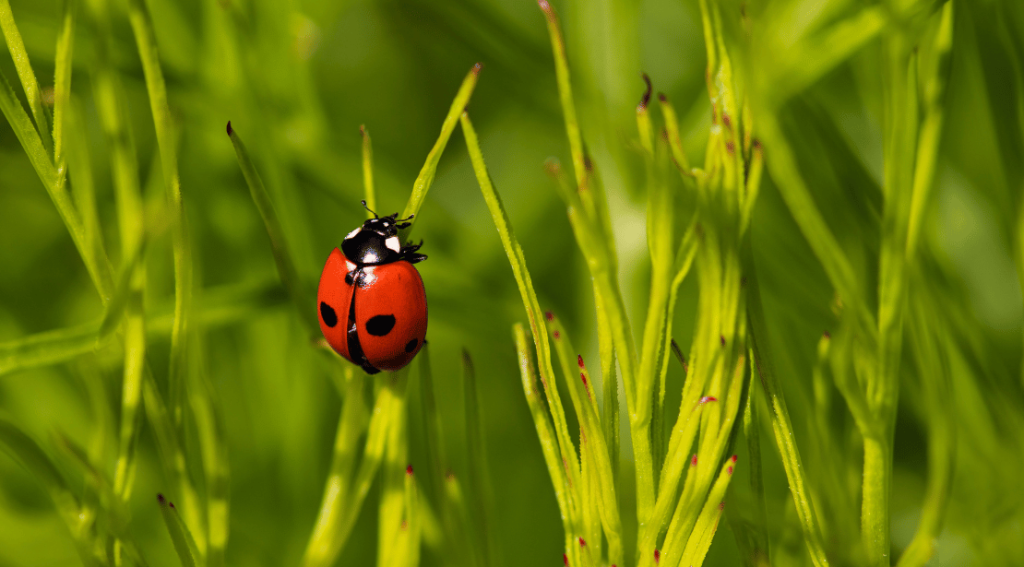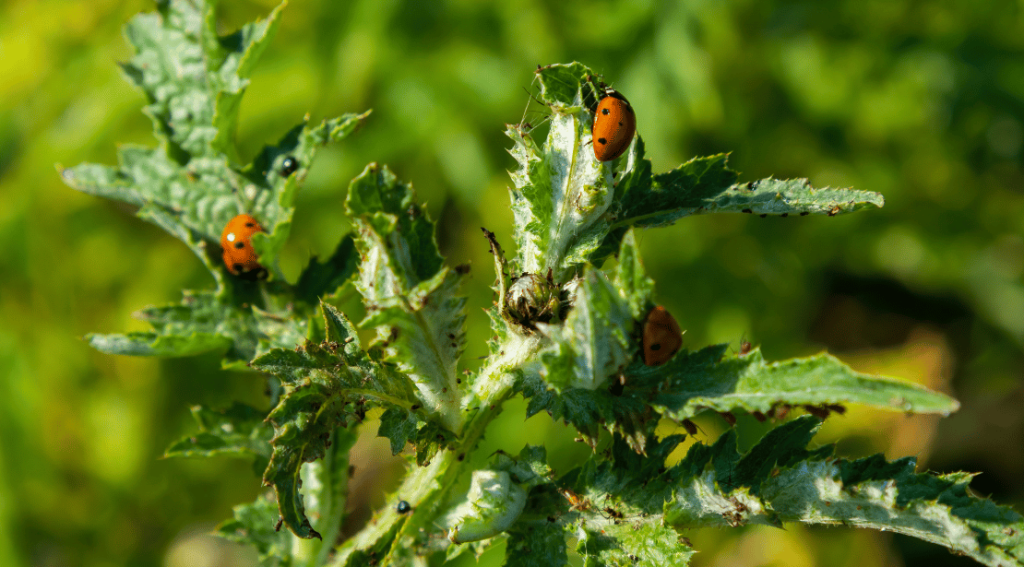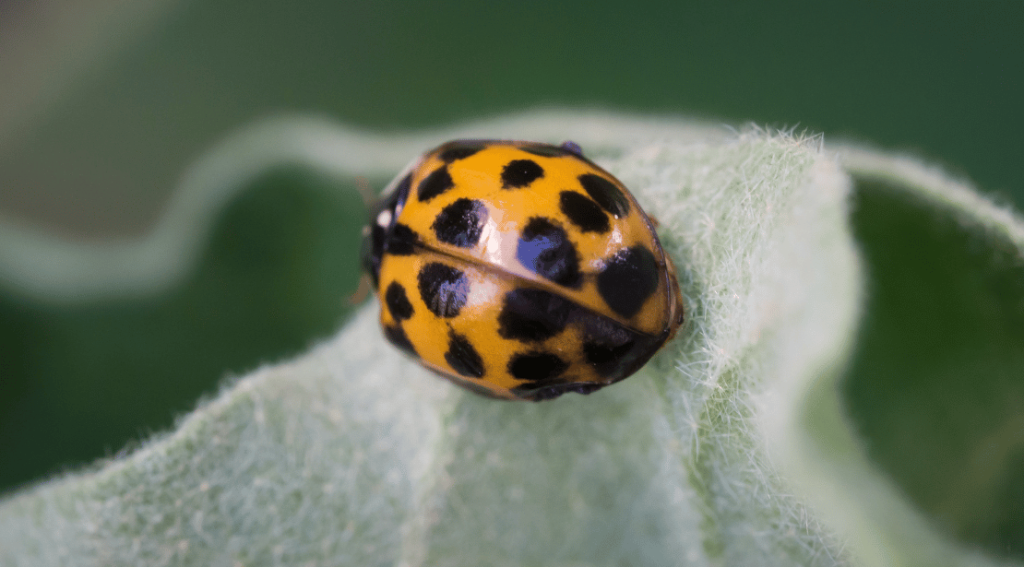Do you often encounter beetles in your garden and home but can’t make the distinction? This blog article discusses the difference between ladybugs and Asian beetles.

Although ladybugs (Coccinella septempunctata) and Asian beetles (Harmonia axyridis) sport similar red and black hues, these tiny insects bear some distinctions. When you do encounter either, it could be a case of mistaken identity on a small scale. If not being able to recognize these insects gives undue anxiety, it’s time to put things to rest. Let’s journey to discover some of the differences between ladybugs and Asian beetles.
Are you ready? Grab your magnifying glass and prepare to enter the intriguing world of ladybugs and Asian beetles.
Ladybugs: The Beloved Garden Guardians
If you’re a fan of superheroes, you’ll fawn over ladybugs. They are the superheroes of gardens. While plants have their own built-in mechanisms to ward off pests, ladybugs in a garden offer additional support. The ladybeetle is a thorough and voracious feeder that is useful when insects like aphids invade. These miniature powerhouses are famous for their appetite and friendliness. With their suit of red armor spotted with black, they swoop in to protect your plants as beneficial insects.
When you see ladybugs around your garden, don’t get concerned. They are your friends, not foes. While beneficial garden sports to keep around, be warned that ladybeetles will nip or bite when disturbed.

Asian Beetles: The Uninvited Houseguests
While you want to keep ladybugs around as a gardener, Asian beetles are a different story. At first glance, they look like ladybeetles but don’t be fooled. Some Asian beetles, like ladybugs, wear a red and black outfit, but it’s not uncommon to spot them wearing an orange coating with black spots. These beetles are also called multicolored Asian lady beetles.
A significant difference between ladybugs and Asian beetles lies in their spots. Asian ladybugs have more black marks than a typical ladybeetle. While it’s natural for ladybugs to invade your garden to feast on pests, the multicolored Asian beetle intrudes on your privacy at home. They are mad party crashers who show up uninvited at your home (pretty much the same way that an uninvited relative does).
Asian ladybeetles will make themselves at home and release a foul, off-putting scent when they feel threatened.
How to Spot the Difference Between Ladybugs and Asian Beetles
You can often tell the difference between ladybugs and Asian beetles by looking at different components or aspects of their lives.
Dining Preferences
Ladybugs eat soft-bodied garden pests like aphids. This makes them beneficial insects in your garden. On the other hand, Asian beetles don’t discriminate. They snack on various things, including aphids, fruits, and even each other. Talk about a dog-eat-dog world.

Number of Spots
Ladybugs have two to seven black spots on their red elytra (wing covers). Asian beetles sport more than that, often more than 19 spots. But this isn’t necessarily the most reliable difference between ladybugs and Asian beetles. Some internet sources purport that typical ladybeetles may have no marks whatsoever, while others, depending on the species, may run up to 24 spots. Subcoccinella vigintiquatuorpunctata is the 24-spot ladybird. And, even within this species, some adults can be seen without marks.
What I find reliable to tell the difference between ladybugs and Asian beetles are the letters ‘M’ and ‘W’ on the latter. Looking at the Asian lady beetle, a black ‘M’ or ‘W’ can be seen behind its head.
Habitat
The typical ladybug can be found parading gardens, forests, and fields. This is how they keep pests in check. However, Asian ladybeetles are enthralled by the warm coziness of your home. They typically flood your home in the fall and winter. Depending on weather conditions, this beetle will fly to buildings from September through November to relax. If you’re in Kentucky, most of this migration will occur in October. Once a suitable building is discovered, Asian beetles will scurry to crevices and holes to seek protection for the winter. If you have an attic, you’ll find them there.
As for the common ladybeetle, an article in the European Journal of Entomology states that it overwinters on hilltops and mountains. In spring, they return to the lowlands for reproduction.
This is a significant difference between ladybugs and Asian beetles.

Odor
A difference between ladybugs and Asian beetles is the odor they emit when threatened. It’s how they protect themselves. But, while both emit a scent, the Asian beetle takes things up a notch. Not only does the secretion stain areas, but it’s stronger and stickier.
While ladybugs and Asian beetles are from the order of insects (Coleoptera), they should not be mistaken. They, like many other beetles, have their differences. They differ in behavior and the impact they have on your life.
Are you interested in learning more about beetles? You may be interested in some of these articles:
What Kills Japanese Beetles? 6 Effective Methods to Try Today
How to Get Rid of Japanese Beetles in the Garden: A Comprehensive Guide
to Know These 20 Common Beetles and Their Intriguing Behavior
9 Different Types of June Bugs (Beetles) to Look Out for Between May and June
7 Green Iridescent Beetles You Might Spot In The Wild (and Around Your Home)




